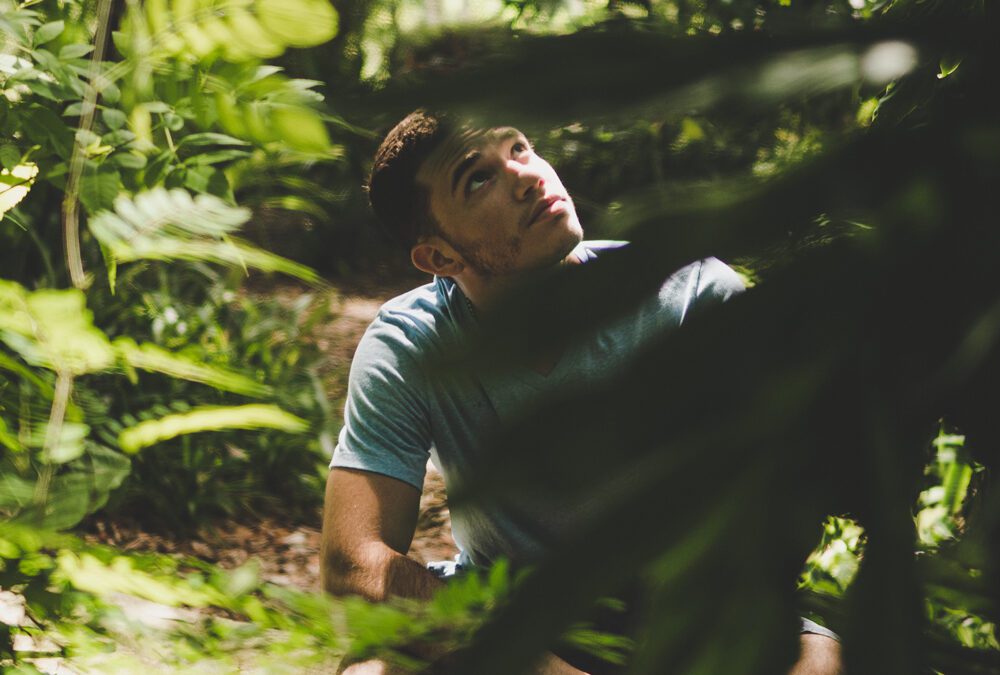Forest bathing, or shinrin yoku in Japanese, originated in Japan in the 80s. People began to feel much worse due to urbanization – the move into big cities and stressful work environments. To remedy the increased ill health, a public health project was launched where doctors can still prescribe hiking along special shinrin yoku trails. Through sight, hearing, taste, smell and touch, visitors can be consciously present in nature – and “bath” their five senses in the atmosphere of the forest.
In parallel, they have carried out extensive studies and looked at the effects of staying in the forest – which have been shown to have many beneficial effects for well-being and health. The research shows, among other things, that forest bathing
lowers/reduces:
- stress
- blood sugar level
- pulse
- blood pressure
- cortisol
- adrenaline
- anxiety/depression
raises/increases:
- immune system
- cognition
- focus
- creativity
- energy level
Natural sounds like the chirping of birds, the rippling of water, and the wind in foliage have a calming effect on us – as does silence – compared to artificial sounds. Even natural colours and patterns have a calming effect on us. The smell of soil in the forest brings positive and safe feelings, while the scent of, e.g. phytoncides*, which we do not directly feel, also has positive effects. Even being outdoors in natural sunlight has positive health effects and affects our levels of melatonin and serotonin, making us alert during the day, sleep well at night, and feel well.
*Phytoncides are a fragrance and part of the trees’ natural immune system. They are secreted when we touch the trees and contribute to our immune system while reducing our stress and calming our brains. Studies on how we are affected by phytoncides have been done mainly on Japanese species.
Try forest bathing
Here are simple instructions for those of you who want to try forest bathing on your own.
- Dress according to the weather so that you can sit still for about 30-40 minutes.
- It can be nice to bring a blanket to sit/lie on.
- Pack a thermos with green tea or another “natural” drink you like.
- Plan a comfortable spot, or choose one spontaneously along the way.
- Turn off the phone, or leave it at home.
- Perform the forest bath in silence.
- Go outside in nature or a green area.
- Start with a slow walk of 5-10 minutes. Feel free to exaggerate the slow tempo so that you really slow down. Focus on how the ground feels under your feet with each step.
- Pick a place that looks comfortable and settle down. Maybe leaning against a tree, sitting on a rock, or lying in the moss.
- Direct attention to hearing 5–10 minutes: Feel free to close your eyes. Listen for sounds near you, perhaps clicking in the bark. Then gradually focus on sounds further away, maybe the wind or a bird.
- Direct your attention to the sensation for 5–10 minutes: Feel free to keep your eyes closed. Feel your body against the surface. Feel your breath. Feel the wind, the sun or the cold against your skin. Pick up different things from the ground and feel the different structures.
- Direct attention to the sense of smell 5-10 minutes: Smell what you pick up from the ground. Are there smells in the air? Do they change if you turn your head?
- Direct attention to vision 5-10 minutes: Open your eyes and look around. Start close and then let your gaze wander away. Look up between the tree branches. Stop if you see something interesting and let your eyes rest. Note colours, movements, and patterns.
- Focus on the sense of taste for 5-10 minutes. Bring out your drink. Keep the drink in your mouth for a while with each sip, and note the flavours. Does it taste different in different places in your mouth and after you swallow?
- Slowly walk back for 5-10 minutes, focusing again on how the ground feels under your feet with each step.

Recent Comments